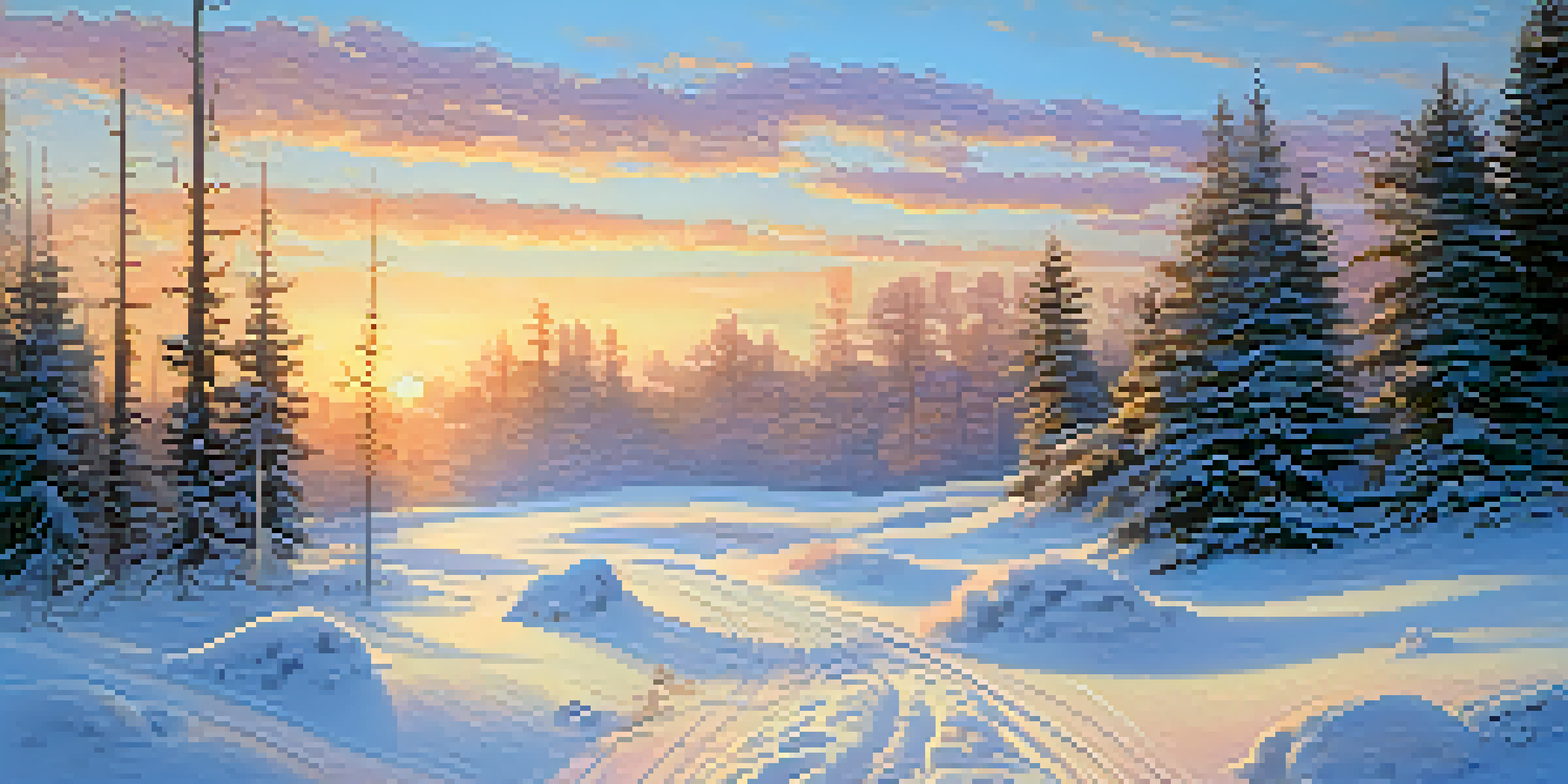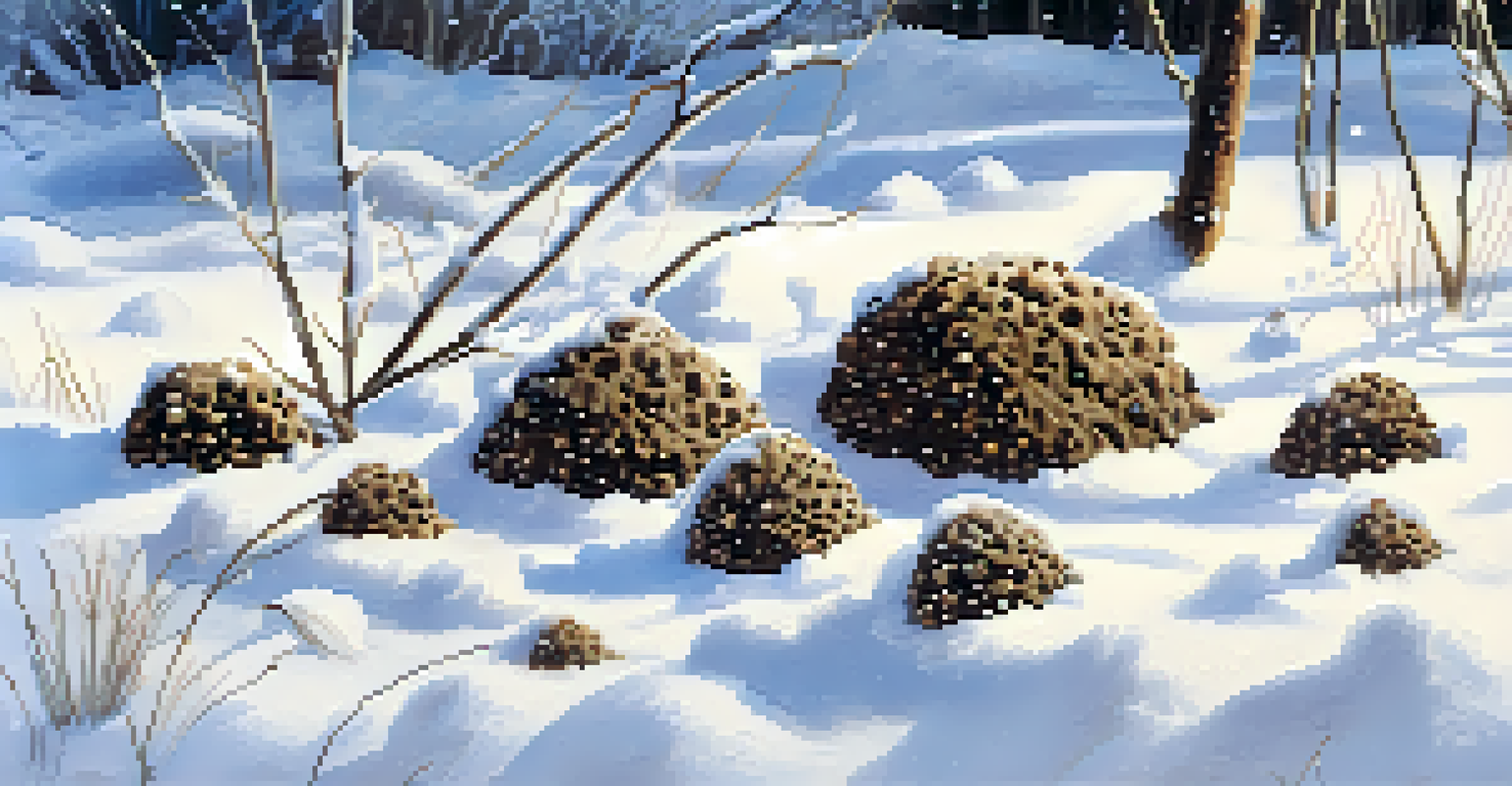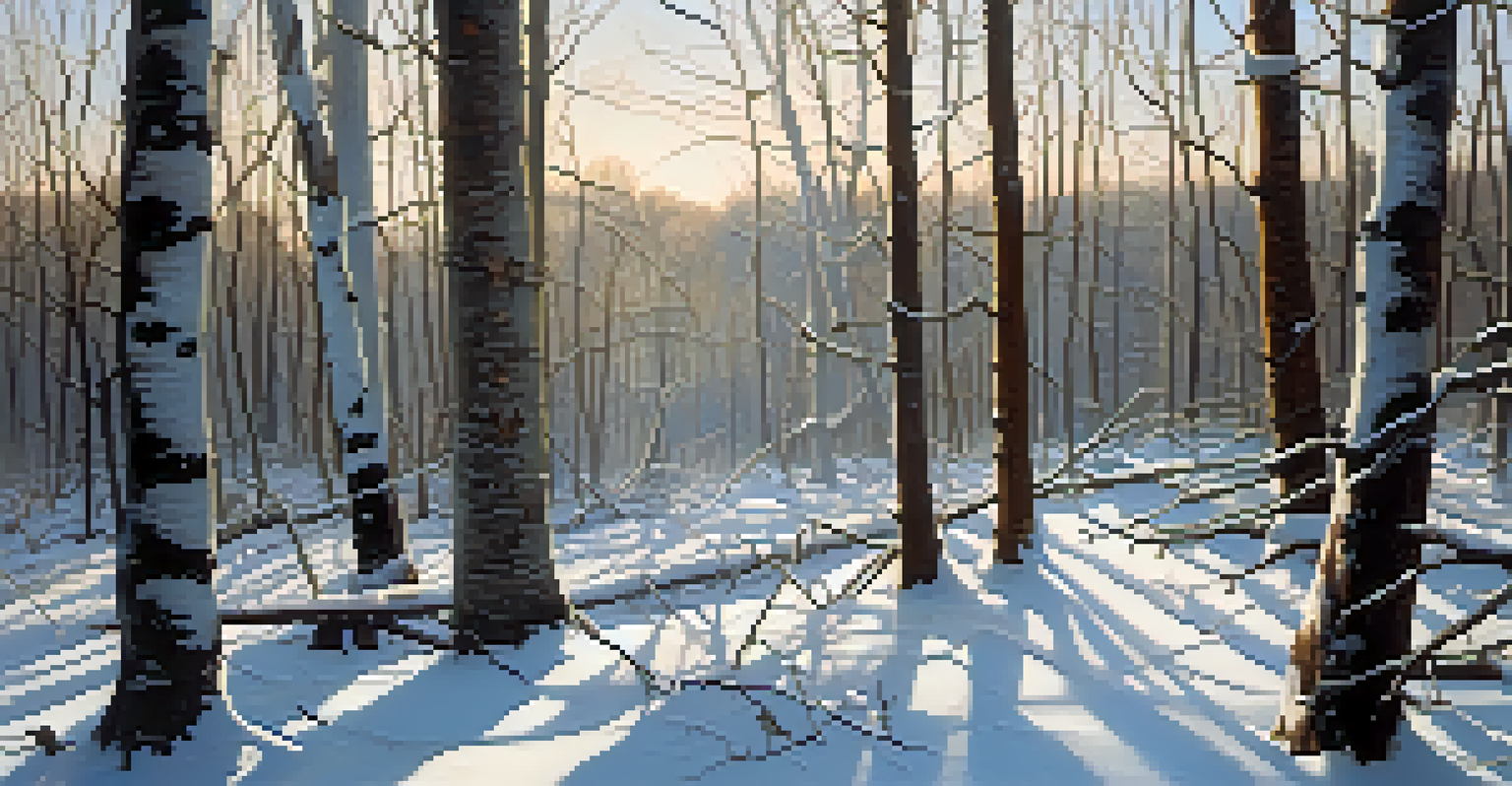Winter Wildlife Tracking: Discover Animals in Their Habitats

Understanding Winter Wildlife Tracking Techniques
Winter wildlife tracking is a fascinating way to connect with nature during the colder months. It involves observing and interpreting animal signs, such as tracks, scat, and feeding signs. This practice not only enhances your appreciation of wildlife but also teaches you about animal behavior and habitat preferences.
In every walk with nature one receives far more than he seeks.
By learning to recognize different tracks, you can identify various species, even when you don't see them directly. For instance, the distinct patterns of a rabbit's hop versus a deer’s stride can tell you a lot about who has been in the area. Plus, tracking in the snow can often be easier than in other seasons because the white canvas highlights these signs beautifully.
As you delve into this captivating world, you'll find that each sign has a story to tell. Understanding these stories helps foster a deeper connection with the environment and encourages mindfulness about wildlife conservation.
Essential Gear for Winter Wildlife Tracking
Before you head out for a tracking adventure, it's important to equip yourself properly. Layering your clothing is key to staying warm; thermal base layers, insulating mid-layers, and waterproof outer layers will keep you comfortable. Don’t forget a warm hat, gloves, and sturdy waterproof boots to protect against cold and wet conditions.

In addition to clothing, consider bringing essential tools like a field guide, binoculars, and a notebook. The field guide helps you identify tracks and wildlife, while binoculars allow you to observe animals from a distance without disturbing them. A notebook is perfect for jotting down observations, sketches, or any questions that arise during your outings.
Learn to Identify Animal Tracks
Recognizing distinct animal tracks in the snow can reveal important information about their behavior and presence in the area.
Lastly, a camera can be a great addition, not just for capturing stunning winter landscapes but also for documenting wildlife signs. Just remember, while it’s tempting to get close for a shot, respecting wildlife space is crucial for their safety and yours.
Identifying Animal Tracks in the Snow
One of the most exciting aspects of winter wildlife tracking is identifying animal tracks. Each species leaves distinct patterns that can reveal a lot about their behavior and movement. For example, the heart-shaped tracks of a snowshoe hare differ significantly from the elongated prints of a fox, making it easier to determine who was there.
The earth has music for those who listen.
To effectively identify tracks, look for size, shape, and depth. A deer’s track will be larger and often show two distinct lobes, while a coyote’s track will be smaller and more elongated. Over time, you’ll develop a mental library of these shapes, helping you recognize which animals frequent your local area.
Remember to consider the context of the tracks as well. Are they leading to a food source, or do they seem to be wandering aimlessly? These details can provide insights into the animal's behavior and habitat use during the winter months.
Understanding Scat: A Key Indicator of Wildlife
Scat, or animal droppings, can be a treasure trove of information for wildlife trackers. By examining scat, you can learn about an animal's diet, health, and even their presence in the area. For instance, the scat of an herbivore, like a deer, will typically contain remnants of plants, while a carnivore's scat may have fur or bones.
Identifying scat can also help you understand the ecosystem better. If you're tracking a predator, understanding what they eat can provide insights into the health of their prey populations. This knowledge is essential for maintaining balanced ecosystems and for anyone interested in wildlife conservation.
Essential Gear for Tracking
Equipping yourself with the right clothing and tools enhances your winter wildlife tracking experience and keeps you comfortable.
When you encounter scat, take note of its size, shape, and contents. This information will help you determine which animal it belongs to and can lead to exciting discoveries about your local wildlife.
Signs of Feeding: Understanding Animal Behavior
Beyond tracks and scat, signs of feeding can tell you a lot about which animals are active in winter. Look for chewed twigs, stripped bark, or nibbled leaves, which indicate that herbivores like deer or rabbits have been dining in the area. Observing these signs can help you understand not only what animals are present but also their foraging habits.
For example, if you see a tree with bark stripped from its lower branches, it could indicate that a deer has been browsing there. Similarly, piles of acorns or seeds can signal the presence of squirrels or birds. By paying attention to these details, you can paint a richer picture of the winter wildlife community in your area.
Tracking feeding signs is not only informative but can also be quite rewarding. It’s like piecing together a wildlife puzzle, where each sign adds to your understanding of the local ecosystem and its inhabitants.
Time of Day and Seasonal Changes in Wildlife Activity
The time of day and seasonal changes greatly influence wildlife activity, especially in winter. Many animals are crepuscular, meaning they are most active during dawn and dusk. This is an ideal time for you to venture out and potentially spot some wildlife or fresh signs of their presence.
As seasons change, so do the habits of animals. For instance, some species may migrate to warmer areas, while others enter a state of hibernation. Understanding these patterns can enhance your tracking experience, as you'll know when and where to look for specific animals.
Respect Wildlife Habitats
Practicing responsible tracking and supporting conservation efforts is crucial for preserving the natural environments we explore.
Keep a journal of your observations regarding timing and animal activity. Over time, you'll notice trends that can help you predict wildlife movement, making your tracking excursions even more fruitful.
Preserving Wildlife Habitats While Tracking
As you embark on your winter wildlife tracking adventures, it’s essential to do so responsibly. Preserving wildlife habitats should be a top priority for anyone who loves nature. Stick to marked trails and avoid trampling delicate vegetation or disturbing nesting areas.
Practicing Leave No Trace principles is crucial. This means leaving the environment as you found it, taking all your trash with you, and minimizing your impact on the ecosystem. By respecting wildlife habitats, you ensure that these areas remain vibrant and healthy for future generations to enjoy.

Additionally, consider supporting local conservation efforts or volunteering for habitat restoration projects. Engaging with your community is a great way to give back to the environment that provides you with so much joy and wonder during your wildlife tracking excursions.